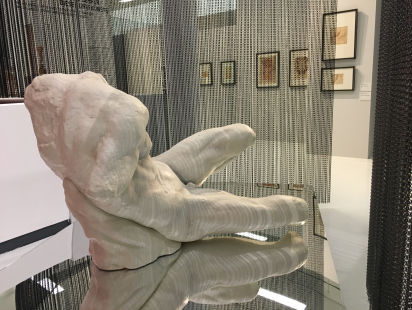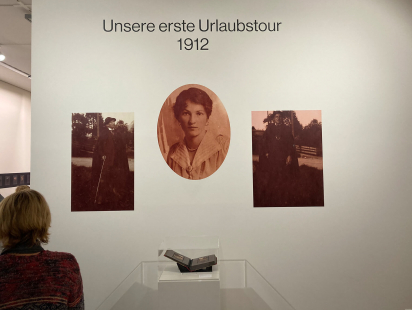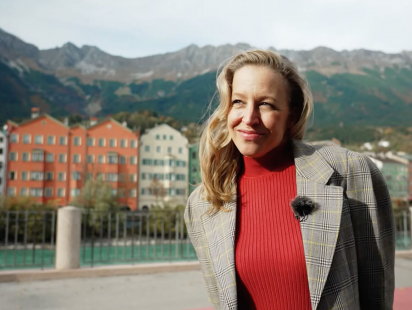The Permanent exhibition Maximilian1 exhibition in the imperial Hofburg in Innsbruck presents Emperor Maximilian I in all his diversity. Since the jubilee year 2019, new focal points are set in the exhibition every year. Currently (from 29 May to 10 October 2021), you can especially get to know the tournament fighter Maximilian and discover his Fragenstein Hunting Lodge discover at Zirl.
THE LAST KNIGHT
Maximilian I (1459-1519) was one of the most important emperors from the House of Habsburg. He led the empire into modern times and also enlarged it decisively. The Hofburg in Innsbruck was one of his most magnificent and favourite residences. In addition, he set himself lasting monuments in the city with the Golden Roof, the Armoury and the Emperor's Tomb Monument in the Hofkirche.
He stood as a dazzling figure at the end of the Middle Ages and at the turn of the modern age. The dawn of the new era was marked by his far-sightedness, his politics, his sense of art and his ambition.
Heroic stories and chivalric virtues fascinated Maximilian even during his youth. His passion for tournaments and hunting was awakened early. The nickname "the last knight" was no coincidence: Maximilian was a good and fit tournament fighter! He helped tournaments to blossom again, inspired by his time in Burgundy. With great zeal he even invented new tournament types and rules.
TURNOUT
RACING AND STABBING
There were different kinds of tournaments. The "race" was probably the most dangerous duel on horseback, as pointed lances were used. The name of the former racecourse and today's Rennweg in Innsbruck goes back to this. The aim of the tournament fighters was to throw the opponent out of the saddle. Special equipment in the form of a half-armour developed under Maximilian.
The "Gestech" was the noblest kind of tournament on horseback and extremely popular. Here one also tried to stab the opponent out of the saddle with a blunt lance about 3.5 meters long. The lance with helmet weighed up to 45 kg and was thus twice as heavy as field armour.
Other forms of tournaments also took place, for example foot fights.
The exhibition presents a racing and a stabbing tool from Maximilian's time. These can be seen in the form of high-quality reproductions.
Here you can become a tournament fighter yourself, risk a look through the helmet and lift the heavy lance. (Photo: © BHÖ/Dolenc)
FESTIVE SURROUNDINGS
Under Emperor Maximilian I tournaments were usually only part of courtly festivities. Guests were also invited to hunts, banquets and mummeries (masquerades) with dancing. The masquerades were a welcome change from the sporting competitions. Maximilian himself took part in them in disguise, usually as torchbearer or master of ceremonies. Noble fabrics and furs were used for the costumes. The emperor also used these events to present his political plans.
Historical depictions of such mummeries can be seen in the exhibition, and animation brings them to life. Incidentally, individual sheets of these scenes could be attributed to the Innsbruck court.
TURNING BOOKS
Emperor Maximilian I was frequently depicted as a keen tournament fighter in various books. In addition to the battles, the artists also depicted the elaborate court ceremonial. Maximilian spared no expense either for the ostentatious festivities or for the effective self-portrayal in these works.
The most famous tournament book was the "Freydal". A special highlight of the exhibition are preliminary drawings for the Freydal from the Rosenwald Collection of the National Gallery of Art in Washington D. C.. The sketches have glued-on hand corrections that may have been made by Maximilian himself. These sketches have rarely been seen in Europe.
Various other depictions from tournament books can be viewed in digital form in the exhibition.
HELMSCHAU
An important part of the tournament equipment was the helmet - usually with small eye slits. The conspicuous helmet decorations were shown before the fights in so-called "helmet shows". Thereby the tournament ability should be proved. In the exhibition you can not only take a look through such a helmet, but also see numerous imaginative and artistic helmet adornments.
TIME TRAVEL FROM RACECOURSE TO RACECOURSE
The exhibition also offers an exciting journey through time: In an animation, you can experience film scenes of today's race course and depictions of the tournaments 500 years ago at the same location up close.
QUESTIONER
The Fragenstein Castle above Zirl was already built around 1200 on a rock spur. In the 15th century it finally came into the possession of the Habsburgs. Emperor Maximilian I used it primarily as a hunting lodge. However, after the death of his second wife Bianca Maria Sforza , the castle became the residence of his mistress Anna von Helfenstein, with whom Maximilian had eight children out of wedlock. The emperor had Fragenstein furnished as a retreat, and there were also large orchards and vineyards.
The castles of Fragenstein and Martinsbühel were important backdrops for show climbs and chamois hunts on the Martinswand. Spectators could watch the daring hunters from there.
During the War of the Spanish Succession, Fragenstein Castle was blown up, so that only two towers remain today.
For the exhibition, a virtual 3D model of the castle complex at the time of Maximilian was created in cooperation with the market town of Zirl. The scientific basis for this is based on various historical sources as well as architecturaland topographical research
LEGEND IN THE MARTINSWAND
The famous legend of Maximilian's adventures in the Martin's Wall must of course not be forgotten in connection with Fragenstein Castle. According to legend, the emperor was rescued from his predicament by an "angel" or a lad. Several paintings about this can be seen.
Duke Charles the Bold of Burgundy and Maximilian's father, Emperor Frederick III, negotiate the marriage of Maria and Maximilian. Both figures are among the bronze statues in the Court Church. (Photo: © BHÖ/Dolenc)
OTHER HIGHLIGHTS OF THE EXHIBITION
In addition to the major tournament focus, many other aspects of Maximilian's life can also be discovered as part of the permanent exhibition: Visitors get to know his family and see, for example, the replica bridal jewellery of Bianca Maria Sforza. Maximilian's economic policy is also vividly presented. In a film, visitors can watch interviews with the historical personalities of a diplomat, banker and poet. In an entertaining way they tell what they think about the emperor. Finally, the focus is on Maximilian's "Memoria". Both the walk-through Gate of Honour and the modern staging of the reliefs and bronze figures of the Emperor's Tomb Monument are very impressive.
APP
The Maximilian1 app provides additional background information and augmented reality effects. In this way, visitors are accompanied through the exhibition in a modern way.
GUIDES
There are also daily overview tours (3:30 pm) and curator tours on Sundays in July and September 2021 at 10:30 am.
THE IMPERIAL COURT CASTLE IN INNSBRUCK
The Innsbruck Hofburg presents itself today as a baroque palace. This current design goes back to Maria Theresa in the 18th century. All the baroque splendour can be seen in the exhibition rooms on the 2nd floor, with the Giant Hall even one of the most beautiful baroque halls in the Alps. In addition to Maria Theresa's family and Emperor Maximilian I, Andreas Hofer and the famous Empress Sisi also play a role here. In any case: worth seeing!
The Giant's Hall of the Imperial Palace in Innsbruck is considered one of the most beautiful baroque halls. (Photo: © Innsbruck Tourismus/C. Vorhofer)
INFORMATION
Exhibition "Maximilian1 - The Emperor and his Tournaments", www.maximilian1.at
Curator: Dr. Monika Frenzel
Exhibition architect: Gerhard Veigel
Art director: Manfred Corrine
Project management: Burghauptmannschaft Österreich, HR Mag. Markus Wimmer and Christian Gepp, BA, MA
Imperial Hofburg, Rennweg 1, 6020 Innsbruck, Tel.: +43 1 53649 814111, www.hofburg-innsbruck.at
Many thanks to the curator and to the project management of the Imperial Palace of Austria for the excellent cooperation.
Top cover picture: Armour (Photo: © BHÖ/Dolenc)
LINKS
Finally, I may recommend various blog articles. Many thanks to my colleagues at this point.
- Exclusive interview with Emperor Max by Lea Hajner
- Castles, palacesand ruins around Innsbruck by Danijel Jovanovic
- Castles, palaces and ruins - part 2 by Danijel Jovanovic
- Emperor Max Grotto by Danijel Jovanovic
Rate this article
Show me the location on the map
A Tyrolean girl, graphic designer, blogger and tour guide with a variety of interests and a weakness for nice people, culture, starry night skies, one more beer and the mountains.
Similar articles
It is open until April 18, 2022 at the regional museum Ferdinandeum in Innsbruck…
It was some years ago that Roland Sila, head of the Ferdinandeum library, discovered…
On December 7, a new comedy series starring Nina Proll will start on ServusTV. "Aus die Maus"…
Innsbruck couldn't have dressed up better this October. The air is bone-chillingly cold, the view of the…










